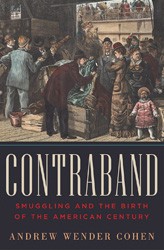Pluck, ingenuity, tenacity, intelligence, and creativity are words that aptly describe the characteristics of the pioneering Jews who settled in isolated and beautiful Key West, Florida. Their fascinating story is skillfully told by Arlo Haskell in his book The Jews of Key West: Smugglers, Cigar Makers and Revolutionaries (1823−1969). Haskell fills his social history with detailed and colorful sketches of individuals and families, bringing their accomplishments to life through personal letters, contemporaneous newspaper articles, and archival photos and drawings.
The first documented arrival of Jews in Key West was in 1823 with the entrance of Levi Charles Harby, a Jewish “sailing master,” as part of the West Indies Squadron under command of Commodore David Porter of the United States Navy. The squadron was there to capture the pirates who were using Key West as one of their launching points to attack the very successful Caribbean trade routes. Key West sat next to a ninety mile-wide shipping lane and was only 106 miles north of Havana, Cuba, a bustling Spanish port city. This trade was essential to the American economy and international trade, and so Key West soon became an important American naval base.
Key West became known as a raucous place filled with mosquitoes; rowdy, hard drinking sailors; illegal slave traders; and saloons, says Haskell. It was a town that offered a political and economic life far different than the rest of Florida and the South. According to Haskell, it had a “relatively progressive and tolerant climate…where nearly half of the white citizens were foreign born” and blacks were “twice as likely to be free” than in any other place in the United States. In fact, Key West was a “northern ally” of Lincoln during the Civil War.
Jewish merchants and peddlers from the North and the Southeast were quick to seize upon the lucrative economic opportunities the port offered despite the fact that Key West could only be reached by boat. These Jewish business people reached out to the nearby Cuban Jewish community. These two Jewish communities drew upon their expertise and common interests and set up highly profitable cigar making businesses, dry goods shops, smuggling routes, and rum running operations. Key West “became a cigar manufacturing center without rival,” writes Haskell.
Haskell follows the development of the Jewish community up until 1969 and the milestone completion of the building of B’nai Zion Synagogue, marking 200 years of Jewish history in Key West. Throughout this period there were accomplishments that helped not only the Key West Jews but the larger Jewish world. For example, Key West served as a haven for poor New York Jews who were placed there by the New York Industrial Removal Office (IRO), an organization dedicated to helping poor Jews resettle in less crowded areas of the country. In the 1920s, European Jews fleeing persecution and prevented from legally entering the United States were secreted into Key West with the help of the Cuban Jewish community. This excellent book will appeal to readers who want to better understand the richness and diversity of the American Jewish experience.



